Robert Fulton’s North River Steamboat (popularly called The Clermont) was launched in 1807, igniting a transportation revolution, and greatly changed the ease with which people could travel up the Hudson River to Albany and points beyond, but the speed with which they could be taken across the East River.
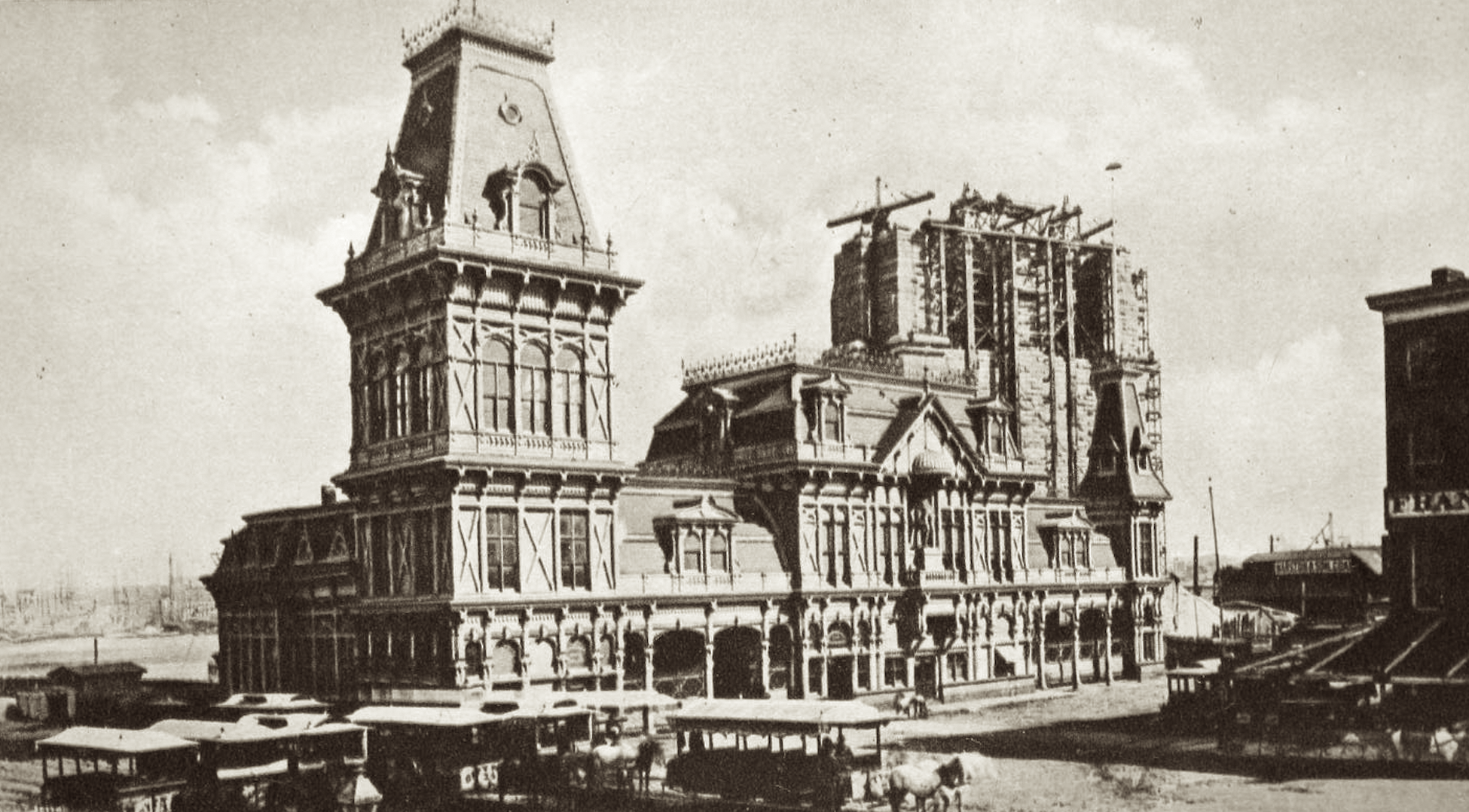
The Fulton Ferry House with the tower of the Brooklyn Bridge going up behind it, 1874. The ferry house stood until 1926. From Valentine’s Manual of Old New York, 1917-1918, edited by Henry Collins Brown.
The first steam-powered ferry boat, called the Juliana, began running in 1811 on the line between New York and Hoboken, operated by John Stevens. Robert Fulton’s steam-powered ferries, the Jersey and York, began running to Paulus Hook in 1812 and 1813, respectively. In 1814, Fulton entered a partnership with William Cutting and the New York and Brooklyn Steam Ferry Boat Company began operations, backed financially by the wealthy Pierrepont family. The steam ferry Nassau connected Manhattan and Brooklyn, reducing a ride that used to take an hour to around four to eight minutes, making it easier than ever for people to get to and back from Brooklyn.
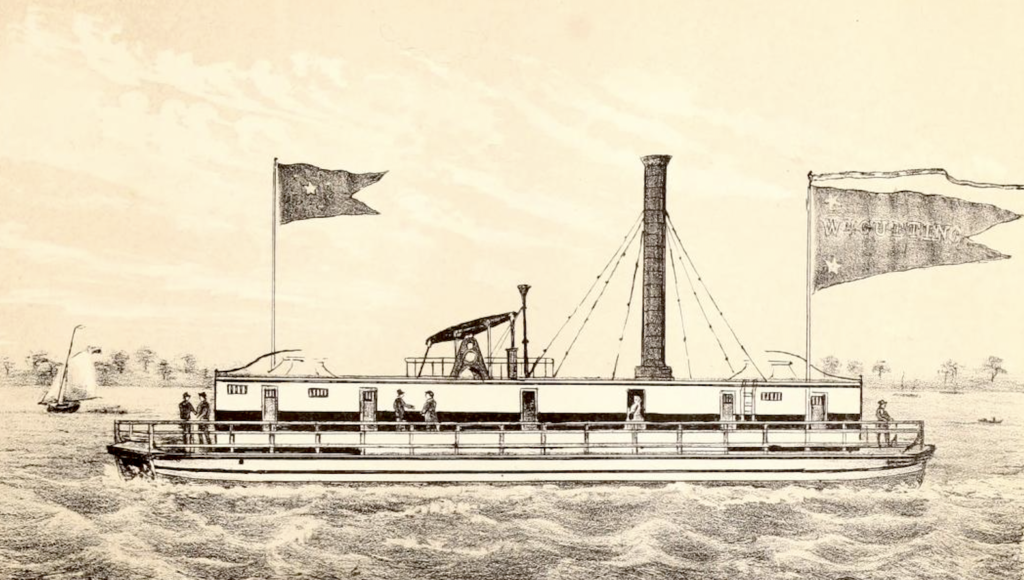
The ferry boat William Cutting, named for Robert Fulton’s business partner, who was married to Fulton’s sister in law. This was the second steam boat serving Fulton Ferry, going into service in 1827. From Old New York: From its earliest history to about the year 1868 by L. Bayard Smith.
In 1816, Brooklyn was incorporated into a village. That same year, the road to the ferry was renamed Fulton Street in honor of Robert Fulton, who had recently died. The City of New-York, now but a short jaunt away, followed suit, renaming two streets that ran the width of Manhattan: Fair Street (east of Broadway), and Partition Street (west of Broadway). Each Fulton Street ended at the ferry terminal, where one could board a steam ferry or horse-powered ferry (the latter was cheaper, costing 2 cents vs 4 cents).
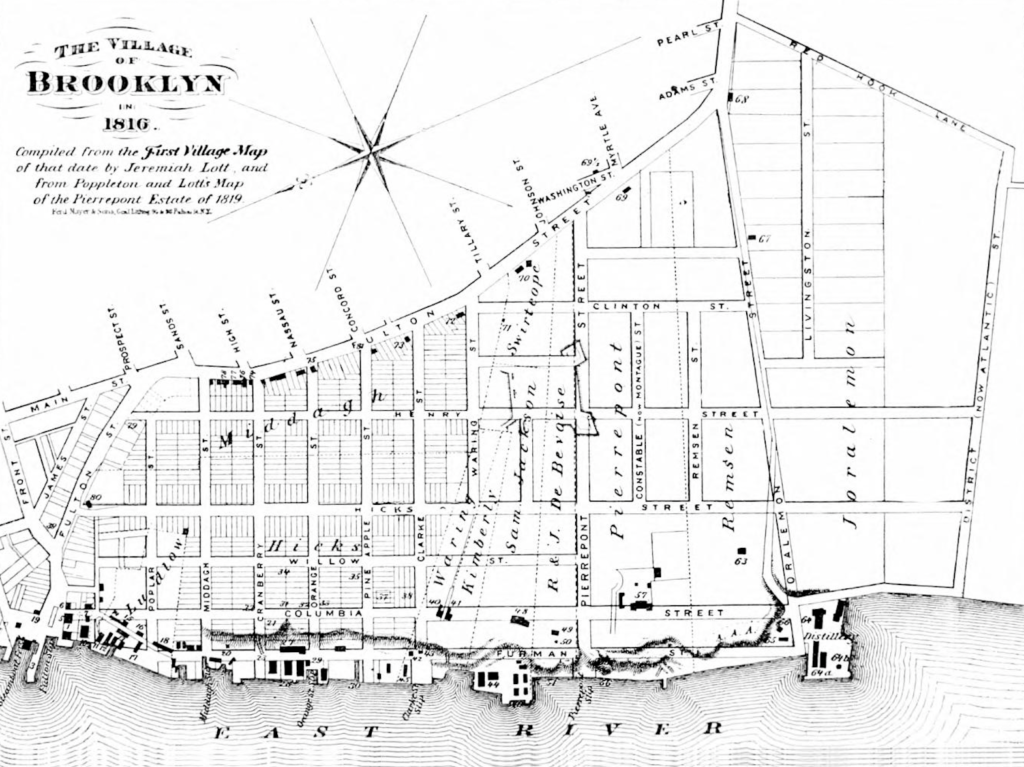
The Village of Brooklyn as it looked in 1816. Many of the streets remain. The outline of the fortification denotes the location of Fort Brooklyn, constructed by the British in 1780. From The memorial history of the City of New-York by James Grant Wilson.
Brooklyn was growing rapidly, with the population increasing from 4,495 in 1790 to 15,396 in 1830. Most residents lived around the ferry or along the Old Ferry road, and along the heights overlooking the river. Numerous taverns, hotels, groceries, stables, and houses surrounded the ferry, and as the water lots were filled in the Brooklynites followed along. Folks who wanted to reach points east were able to catch one of the stagecoaches bound for Flushing. The area grew so fast that Brooklyn was able to successfully petition for a city charter, becoming the City of Brooklyn in 1834.
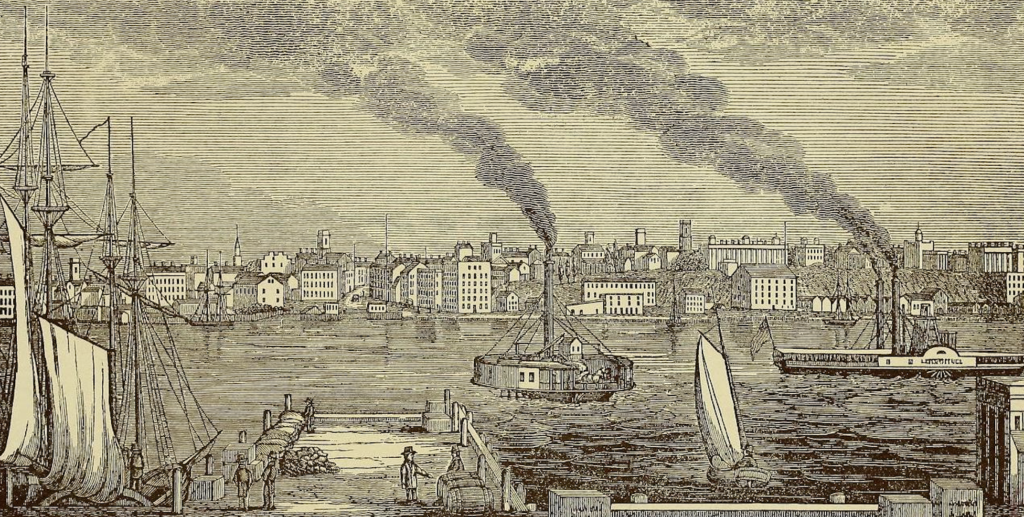
A ferry coming into Peck Slip from Brooklyn, c. 1850. This was approximately the same route as the one plied by Cornelius Dirckson in 1642. From History of Long Island from its discovery & settlement to the present time, Volume 3 (3rd edition) by Benjamin F. Warner, 1918.
By midcentury, the Union Ferry Company had consolidated operations of several of the Brooklyn ferries, including the Fulton Ferry and 6 other lines, with 23 boats in service. A streetcar line opened along Fulton Street in 1854, and the Kings County Elevated Railway started running trains to Fulton Ferry in 1888, with the end of Fulton Street a flurry of activity and associated traffic, which increasingly started to become a problem.
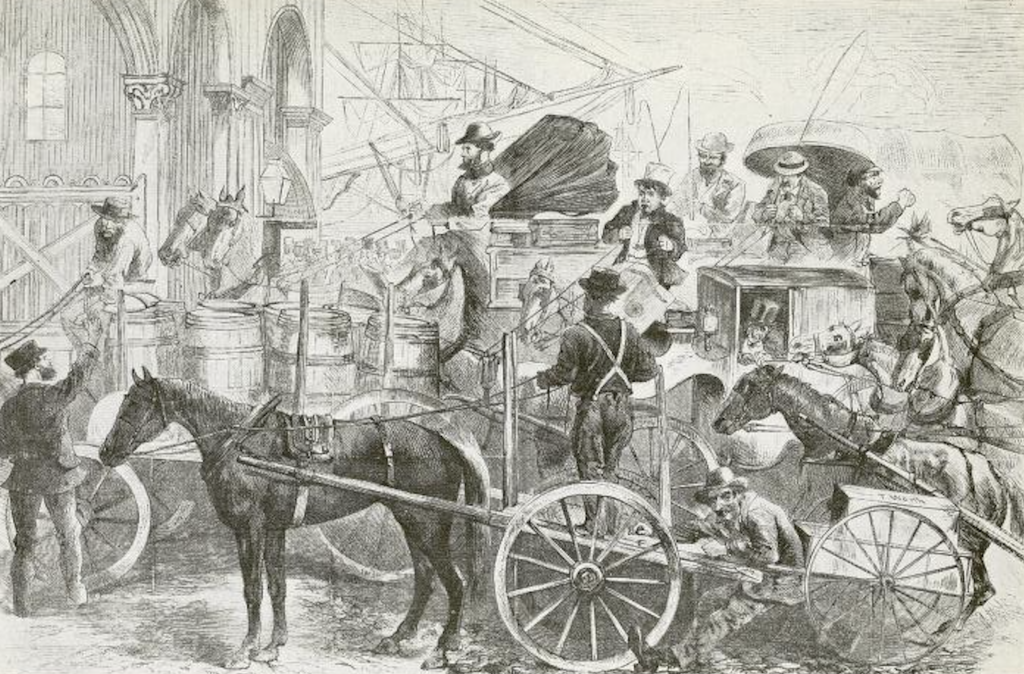
An example of a typical traffic jam, with farmers, tradesmen, pleasure-seekers, and commuters all waiting for the next ferry boat, c. 1870. From Valentine’s Manual of the Corporation of the City of New York, edited by Henry Collins Brown, 1920.
In 1871, the Union Ferry Company heralded the opening of its new terminal, an ornate wooden structure designed by architect William Olmsted in the popular French Second Empire style. However, the clock was ticking on the life of the ferries. Several bad winters had greatly impeded navigation on the East River, and the twin cities of New York and Brooklyn had finalized a plan to build a bridge across it. Construction began in earnest in 1869, with the Brooklyn Bridge opening in 1883. Ridership on the Fulton Ferry steeply declined, but it remained in service until 1924, with the beautiful ferry house razed just two years later.
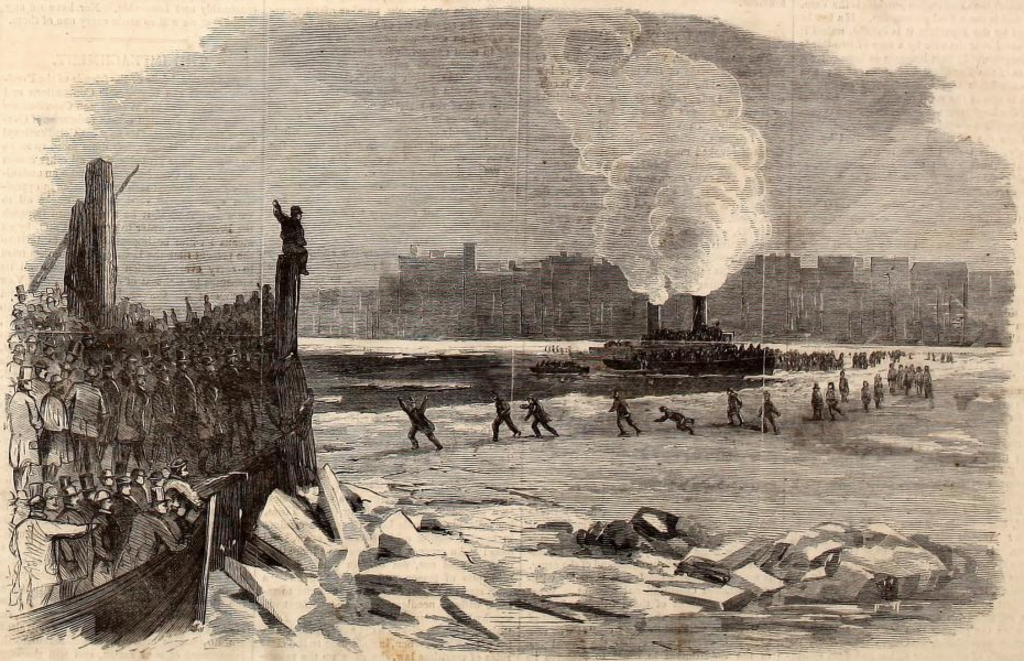
Folks stuck on the ice bridge that formed across the East River in January 1867. One of the ferry boats was used to rescue people once the ice started breaking apart. However, the ferry boats couldn’t offer reliable service in this kind of weather. From Harper’s Weekly, February 7, 1867, Vol. XI, No. 528.
Select sources
Railroad Ferries of the Hudson and Stories of a Deckhand by Raymond J. Baxter and Arthur G. Adams
Over and Back: The History of Ferryboats in New York Harbor by Brian J. Cudahy
An Architectural Guidebook to Brooklyn by Francis Morrone
Building the Empire State: Political Economy in the Early Republic by Brian Phillips Murphy
Steam: The Untold Story of America’s First Great Invention by Andrea Sutcliffe
Author’s note: The title of this post and that of Part 1 are both from Walt Whitman’s beautiful poem, “Crossing Brooklyn Ferry,” which was first published in 1856 in the second edition of Leaves of Grass.
